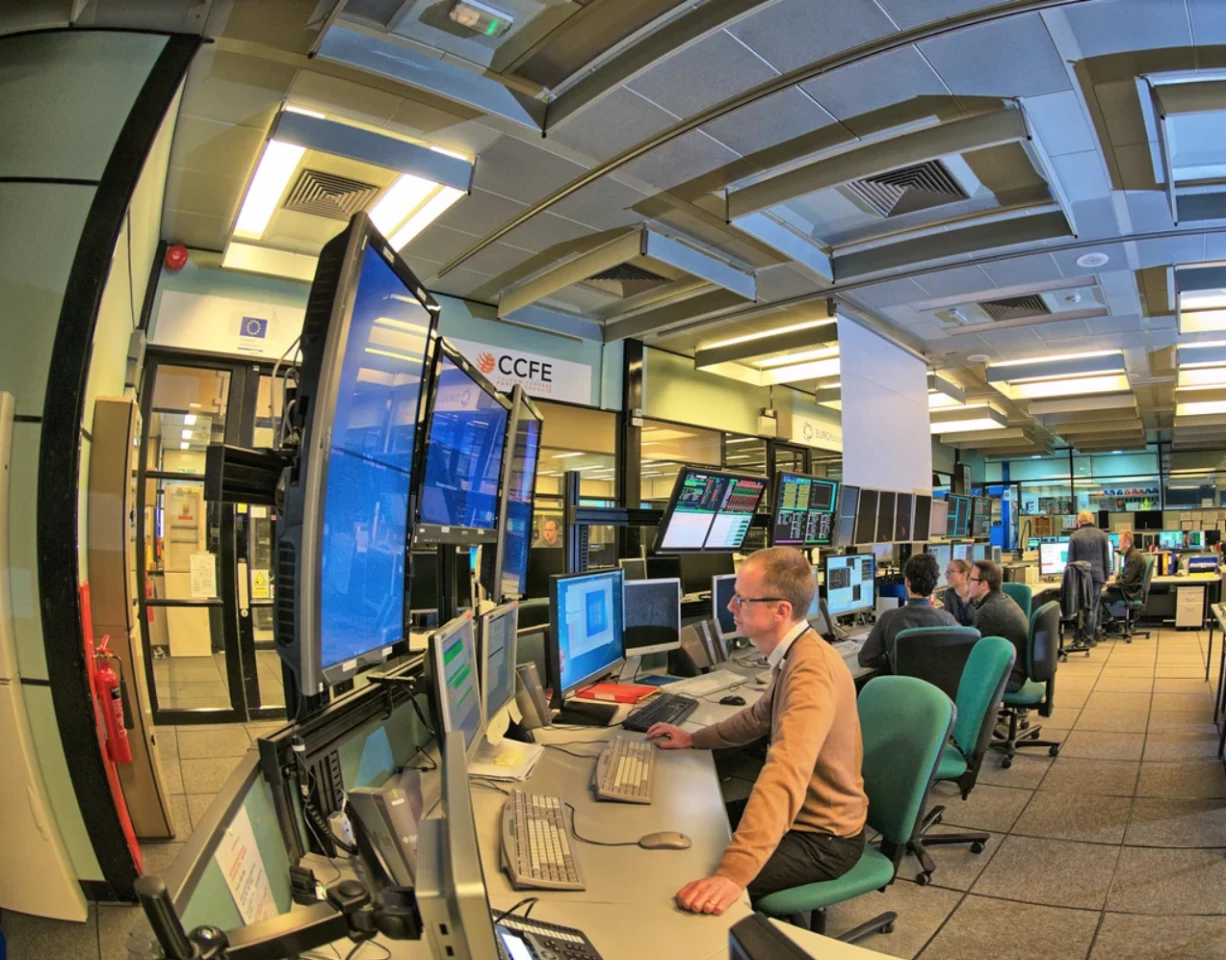In 1991, scientists working on a pioneering energy facility made a a momentous breakthrough, achieving the controlled release of nuclear fusion power for the first time. In 1997, the Joint European Torus (JET) tokamak reactor was then used to set an energy output world record of 22 megajoules. Twenty-five years later, scientists have now smashed this world record in what they say is a landmark moment in the quest for nuclear fusion energy.
JET is a type of fusion reactor known as a tokamak, a donut-shaped chamber that uses a neat arrangement of magnetic coils to confine circular streams of plasma. This plasma is heated to millions of degrees and, theoretically, is held in place long enough for hydrogen atoms within it to fuse together to form helium atoms, which releases huge amount of energy.
This is the process that takes place inside the Sun, where tremendous gravitational forces and extreme heat fuse the hydrogen isotopes deuterium and tritium together to generate energy. Tritium is relatively rare and problematic to handle here on Earth, however, and for this reason the last experiments to use the fuel were those record-breaking efforts at JET in 1997. Researchers typically use hydrogen or deuterium in place of tritium in plasma experiments.
"We can explore the physics in fusion plasmas very well by working with hydrogen or deuterium, so this is the standard worldwide," explained Dr. Athina Kappatou, from the Max Planck Institute for Plasma Physics. "However, for the transition to the international, large-scale, fusion experiment ITER, it is important that we prepare for the conditions prevailing there."
ITER, or the International Thermonuclear Experimental Reactor, is a seven-story tall tokamak under construction in southern France, and will become the world's largest nuclear fusion device when completed in 2025. ITER will use a 50:50 mix of deuterium and tritium and is designed to produce 500 MW of power from a 50 MW input for heating the plasma, demonstrating a tenfold gain in energy output.

In preparation for these experiments later this decade, engineers at JET replaced the interior carbon lining of the plasma vessel with a combination of beryllium and tungsten, the same materials that will line the walls at ITER. This modification, along with careful modeling ahead of the experiments, enabled scientists to produce stable plasma with the deuterium-tritium fuel that produced 59 megajoules of energy over five seconds, more than double the previous record.
“These landmark results have taken us a huge step closer to conquering one of the biggest scientific and engineering challenges of them all," said Ian Chapman, CEO of the UK Atomic Energy Authority. "It is reward for over 20 years of research and experiments with our partners from across Europe."
During the 1997 experiments, the reactor also briefly produced 16 MW of peak power, a record for a tokamak device. That record still stands today and was not broken by the most recent round of JET experiments, which instead were focused on producing sustained fusion power.
"If we can maintain fusion for five seconds, we can do it for five minutes and then five hours as we scale up our operations in future machines," said Tony Donné, EUROfusion Programme Manager.
Sources: UK Atomic Energy Authority, Max Planck Institute for Plasma Physics





